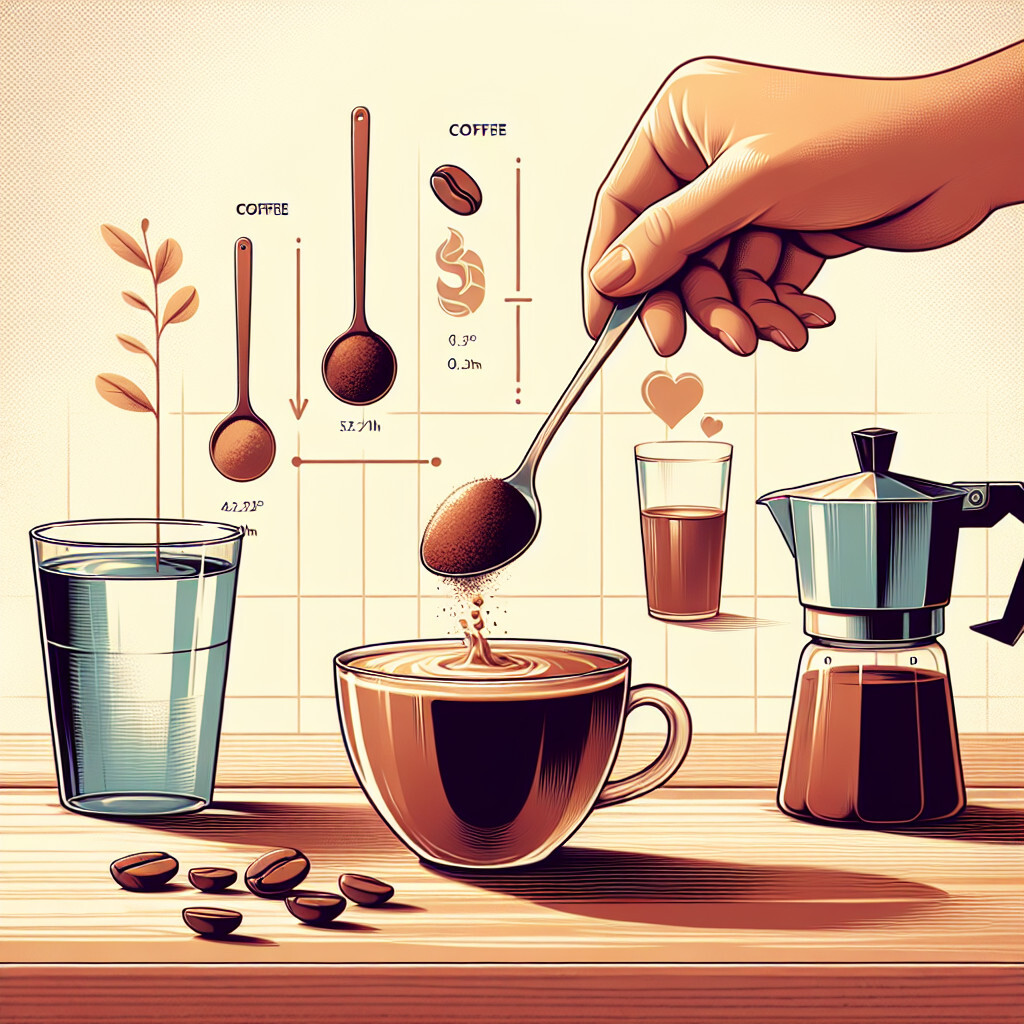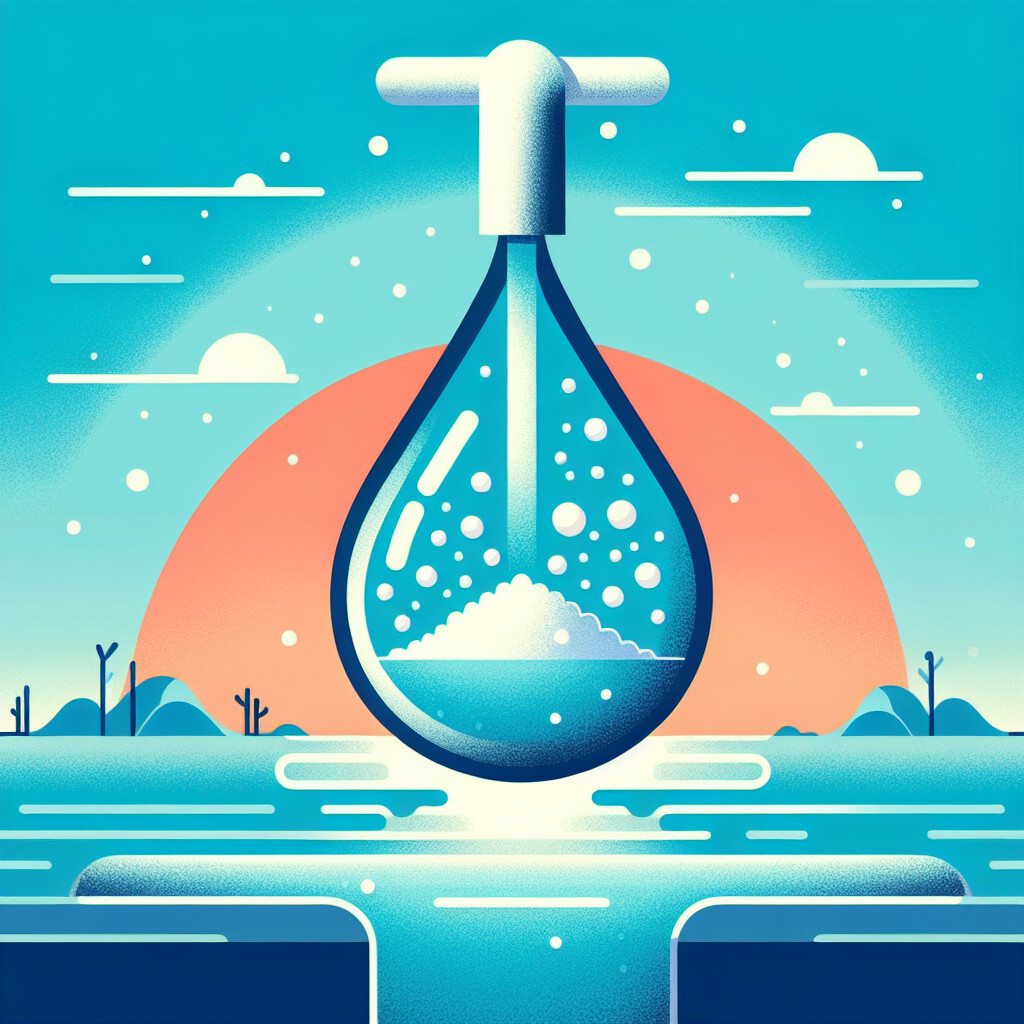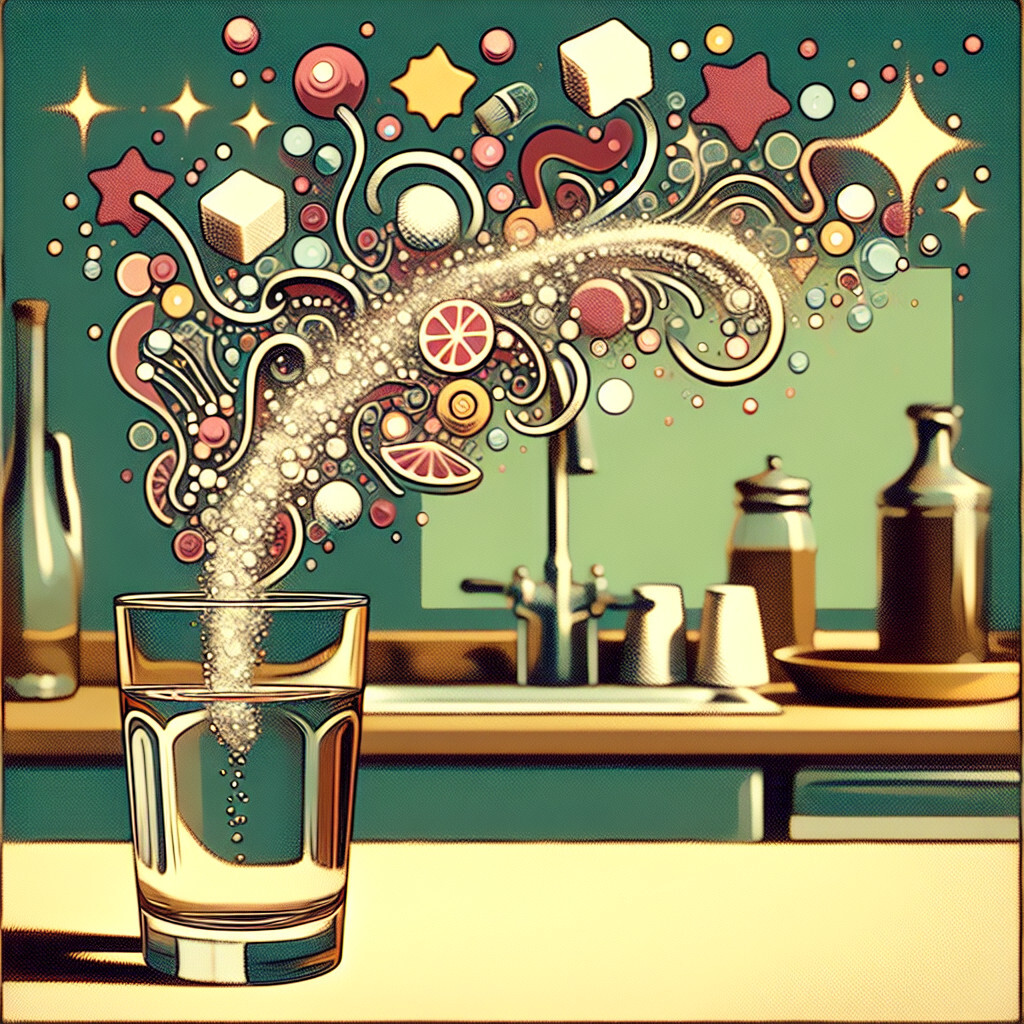-
Table of Contents
- Introduction
- Top 5 Effective Methods for Water Purification
- Exploring the Best Techniques for Purifying Water
- Understanding the Science Behind Water Purification Methods
- The Role of Technology in Enhancing Water Purification
- Comparing Traditional and Modern Methods of Water Purification
- Q&A
- Conclusion
“Unlocking Purity: The Best Methods for Water Purification”
Introduction
Water purification is a crucial process that ensures the safety and cleanliness of water for various uses, particularly for drinking. The best methods for water purification include boiling, distillation, use of water purification tablets, reverse osmosis, ultraviolet light treatment, and filtration. These methods effectively remove or kill harmful substances and organisms such as bacteria, viruses, algae, fungi, minerals, and man-made pollutants that can pose serious health risks. Each method has its own advantages and is suitable for different situations, depending on the quality of the water source and the level of purification required.
Top 5 Effective Methods for Water Purification

Water purification is a critical process that ensures we have access to clean, safe drinking water. It involves the removal of contaminants, bacteria, viruses, and other harmful substances from water, making it suitable for consumption and use. There are several methods of water purification, each with its unique advantages and effectiveness. This article will explore the top five effective methods for water purification.
Firstly, boiling is one of the most common and simplest methods of water purification. It involves heating water to its boiling point, which kills most bacteria, viruses, and parasites. Boiling is a reliable method, especially in emergency situations where there is no access to other forms of water treatment. However, it does not remove chemical contaminants or improve the taste and appearance of the water.
Secondly, filtration is another popular method of water purification. It involves passing water through a filter to remove impurities. There are various types of filters, including activated carbon filters, ceramic filters, and reverse osmosis filters. Activated carbon filters are effective in removing chlorine, sediment, volatile organic compounds (VOCs), taste and odor from water. Ceramic filters, on the other hand, are good at eliminating bacteria and protozoa. Reverse osmosis filters are the most effective, removing up to 99% of contaminants, including heavy metals, fluoride, and other chemicals.
Thirdly, distillation is a highly effective method of water purification. It involves heating water until it turns into steam and then condensing the steam back into liquid form. This process removes bacteria, viruses, heavy metals, and other contaminants. However, distillation is energy-intensive and may not be practical for everyday use.
Fourthly, ultraviolet (UV) disinfection is a modern method of water purification that uses UV light to kill bacteria, viruses, and other pathogens. It is a quick, chemical-free process that does not alter the taste or odor of the water. However, UV disinfection does not remove chemical contaminants, and the water must be clear for the UV light to be effective.
Lastly, chlorination is a widely used method of water purification, especially in municipal water treatment. It involves adding chlorine to water to kill bacteria, viruses, and other pathogens. Chlorination is effective and inexpensive, but it can leave a residual taste and odor in the water. It also does not remove chemical contaminants.
In conclusion, the best method for water purification depends on the quality of the water source and the specific contaminants present. Boiling and filtration are suitable for emergency situations and everyday use, respectively. Distillation and UV disinfection are highly effective but may not be practical for everyday use. Chlorination is widely used in municipal water treatment but may not be suitable for people sensitive to the taste and odor of chlorine. Therefore, it is essential to understand the different methods of water purification to choose the most suitable one for your needs.
Exploring the Best Techniques for Purifying Water
Water purification is a critical process that ensures the water we consume is safe and free from harmful substances. It involves the removal of contaminants, bacteria, viruses, and other impurities that can cause diseases. With the increasing concern about water pollution and the need for safe drinking water, it’s essential to understand the best methods for water purification.
One of the most common and effective methods of water purification is boiling. This is a simple and cost-effective technique that kills bacteria and other pathogens present in the water. Boiling water for at least one minute can effectively eliminate most types of disease-causing organisms. However, while boiling is effective in killing bacteria and viruses, it does not remove chemical pollutants or improve the taste and odor of the water.
Another popular method of water purification is the use of chlorine. Chlorination is a method that has been used for decades to treat water. It involves adding chlorine to the water, which kills bacteria, viruses, and other microorganisms. Chlorine is highly effective and relatively cheap, making it a popular choice for water treatment. However, it’s important to note that over-chlorination can lead to health problems and can give the water an unpleasant taste.
Reverse osmosis is another highly effective method for purifying water. This process involves forcing water through a semi-permeable membrane, which filters out impurities, including bacteria, viruses, and chemicals. Reverse osmosis can remove up to 99% of contaminants, making it one of the most effective methods of water purification. However, it’s worth noting that this method can be quite expensive and requires a significant amount of energy.
Ultraviolet (UV) purification is a newer method that uses UV light to kill bacteria and viruses. This method is highly effective and does not use any chemicals, making it an environmentally friendly option. However, UV purification does not remove chemical contaminants, so it’s often used in conjunction with other purification methods.
Distillation is another method that involves boiling water and then condensing the steam back into liquid form. This process removes bacteria, viruses, and chemicals, and can also improve the taste of the water. However, distillation is a slow process and requires a significant amount of energy.
Lastly, activated carbon filters are commonly used in household water filters. These filters work by attracting and trapping impurities in the water. They are effective in removing chlorine, sediment, volatile organic compounds (VOCs), taste and odor from water. However, they do not remove bacteria or viruses.
In conclusion, the best method for water purification largely depends on the quality of the water source and the specific contaminants present. It’s often beneficial to use a combination of methods to ensure the water is thoroughly purified. Regardless of the method chosen, regular testing of the water quality is essential to ensure it remains safe to drink. With the right knowledge and tools, everyone can have access to clean, safe drinking water.
Understanding the Science Behind Water Purification Methods
Water purification is a critical process that ensures the water we consume is safe and free from harmful substances. It involves the removal of contaminants, bacteria, viruses, and other impurities from water, making it suitable for human consumption and use. Understanding the science behind water purification methods can help us appreciate the importance of this process and the best methods to employ.
One of the most common methods of water purification is boiling. This is a simple and effective method that kills most types of disease-causing organisms. When water is heated to its boiling point, the heat kills bacteria, viruses, and parasites that may be present. However, boiling water does not remove chemical contaminants such as heavy metals, salts, and most other pollutants. Therefore, while boiling is an effective method for killing biological contaminants, it is not sufficient for purifying water from chemical pollutants.
Another popular method of water purification is the use of chlorine. Chlorine is a powerful oxidizing agent that kills bacteria and other harmful organisms. It is commonly used in municipal water treatment facilities and is also available for home use in the form of liquid bleach or tablets. However, chlorine can react with organic matter in water to form harmful by-products. Additionally, some pathogens are resistant to chlorine. Therefore, while chlorination is effective in killing many types of pathogens, it is not a foolproof method of water purification.
Reverse osmosis is another highly effective method of water purification. This process involves forcing water through a semi-permeable membrane under pressure. The membrane allows water molecules to pass through but blocks most contaminants. Reverse osmosis can remove up to 99% of water impurities, including bacteria, viruses, heavy metals, and salts. However, this method requires a significant amount of energy and produces a large volume of waste water.
Ultraviolet (UV) disinfection is a relatively new method of water purification that uses UV light to kill bacteria and other pathogens. UV light damages the DNA of microorganisms, preventing them from reproducing and causing disease. UV disinfection is highly effective against bacteria and viruses, but it does not remove chemical contaminants. Additionally, the water must be clear for the UV light to reach all the microorganisms.
Finally, distillation is a method of water purification that involves heating water to create steam, which is then condensed and collected. This process removes most impurities, including bacteria, viruses, and chemicals. However, distillation requires a significant amount of energy and is not practical for large-scale water purification.
In conclusion, there is no one-size-fits-all method for water purification. The best method depends on the quality of the water source and the specific contaminants present. Boiling and chlorination are effective against biological contaminants, but not against chemical pollutants. Reverse osmosis and distillation can remove both biological and chemical contaminants, but they require a lot of energy. UV disinfection is effective against bacteria and viruses, but not against chemical contaminants. Therefore, a combination of methods is often the best approach to ensure safe, clean water.
The Role of Technology in Enhancing Water Purification
Water purification is a critical process that ensures the safety and health of communities worldwide. With the advent of technology, the methods of water purification have significantly evolved, providing more efficient and effective solutions to water contamination. This article will delve into the role of technology in enhancing water purification, highlighting some of the best methods currently in use.
One of the most common and effective methods of water purification is filtration. This process involves passing water through a series of physical barriers or media that trap and remove contaminants. Technological advancements have led to the development of more sophisticated filtration systems, such as activated carbon filters, ceramic filters, and reverse osmosis systems. Activated carbon filters are particularly effective in removing organic compounds and chlorine, while ceramic filters can trap bacteria and other microorganisms. Reverse osmosis, on the other hand, uses a semi-permeable membrane to remove virtually all contaminants, including heavy metals and viruses.
Another significant technological breakthrough in water purification is ultraviolet (UV) disinfection. This method uses UV light to kill or inactivate harmful microorganisms, making it an excellent solution for eliminating bacteria, viruses, and parasites. Unlike chemical disinfectants, UV disinfection does not introduce harmful substances into the water, making it a safer and more environmentally friendly option. Moreover, UV systems are compact and easy to maintain, making them ideal for both residential and commercial applications.
In addition to filtration and UV disinfection, technology has also paved the way for the use of electrochemical processes in water purification. Electrocoagulation, for instance, uses an electric current to remove contaminants from water. This method is particularly effective in treating industrial wastewater, as it can remove heavy metals, oils, and other pollutants that are difficult to eliminate using conventional methods. Furthermore, electrocoagulation is a cost-effective and energy-efficient solution, making it a sustainable choice for large-scale water treatment.
Nanotechnology is another promising field in water purification. Nanofiltration and nanocatalysis, for example, use nanoparticles to remove contaminants from water. These methods offer several advantages over traditional techniques, including higher efficiency, lower energy consumption, and the ability to remove even the smallest contaminants. However, the use of nanotechnology in water purification is still in its early stages, and more research is needed to fully understand its potential and address any potential risks.
Lastly, the role of technology in enhancing water purification extends beyond the development of new methods. It also includes the use of monitoring and control systems that ensure the efficiency and safety of water treatment processes. For instance, sensors and automated control systems can detect changes in water quality in real time, allowing for immediate adjustments and interventions. This not only improves the reliability of water treatment but also reduces the risk of human error.
In conclusion, technology plays a crucial role in enhancing water purification. From advanced filtration systems and UV disinfection to electrochemical processes and nanotechnology, technological innovations provide more efficient, effective, and sustainable solutions to water contamination. As technology continues to evolve, we can expect even more improvements in water purification, ensuring the safety and health of communities worldwide.
Comparing Traditional and Modern Methods of Water Purification
Water purification is a critical process that ensures the water we consume is safe and free from harmful substances. Over the years, various methods have been developed to purify water, ranging from traditional techniques to modern technologies. This article will compare these methods, highlighting their effectiveness, advantages, and disadvantages.
Traditional methods of water purification have been used for centuries and are still prevalent in many parts of the world. These methods include boiling, filtration using sand or charcoal, and chemical treatment with substances like iodine or chlorine. Boiling is one of the simplest and most effective ways to purify water. It kills bacteria, viruses, and parasites, making the water safe to drink. However, it does not remove chemical pollutants or improve the taste and odor of the water.
Filtration using sand or charcoal is another traditional method. Sand filtration works by removing particulate matter, while charcoal absorbs chemical contaminants. These methods are inexpensive and easy to use, but they may not remove all types of contaminants, especially microscopic organisms and heavy metals.
Chemical treatment, on the other hand, is effective against a wide range of contaminants. Chlorine and iodine are commonly used to kill bacteria and viruses. However, they can leave a residual taste and may not be effective against some types of parasites. Moreover, over-reliance on chemical disinfectants can lead to health issues over time.
In contrast, modern methods of water purification offer more comprehensive solutions. These include reverse osmosis, ultraviolet (UV) disinfection, and distillation. Reverse osmosis is a process that uses a semi-permeable membrane to remove contaminants. It is highly effective against bacteria, viruses, heavy metals, and chemical pollutants. However, it requires electricity and produces a significant amount of wastewater.
UV disinfection is another modern method that uses ultraviolet light to kill bacteria and viruses. It is highly effective and does not leave any residual taste. However, it does not remove chemical pollutants or particulate matter. Moreover, it requires electricity, which may not be available in remote areas.
Distillation, on the other hand, is a process that involves boiling water and then condensing the steam to produce purified water. It is effective against a wide range of contaminants, including bacteria, viruses, heavy metals, and chemical pollutants. However, it is energy-intensive and may not be practical for large-scale use.
In conclusion, both traditional and modern methods of water purification have their strengths and weaknesses. Traditional methods are simple, inexpensive, and do not require electricity, making them suitable for use in remote areas or during emergencies. However, they may not remove all types of contaminants. Modern methods, on the other hand, offer more comprehensive solutions but require electricity and can be more expensive. Therefore, the best method for water purification depends on the specific circumstances, including the quality of the source water, the available resources, and the specific needs of the users.
Q&A
1. Question: What is the most common method for water purification?
Answer: The most common method for water purification is filtration, which involves passing water through a series of filters to remove impurities.
2. Question: Are there any chemical methods for water purification?
Answer: Yes, chlorination and iodination are chemical methods used for water purification. They kill bacteria and other harmful organisms in the water.
3. Question: Can boiling water purify it?
Answer: Yes, boiling water is a simple and effective method of water purification. It kills most types of bacteria, viruses, and parasites.
4. Question: What is the role of UV light in water purification?
Answer: UV light is used in water purification to kill bacteria and other microorganisms. It disrupts their DNA, preventing them from reproducing.
5. Question: Is distillation a good method for water purification?
Answer: Yes, distillation is a highly effective method for water purification. It involves boiling water and then condensing the steam, which leaves behind most impurities.
Conclusion
The best methods for water purification include boiling, using water purification tablets, reverse osmosis, distillation, ultraviolet light treatment, and using activated carbon filters. These methods are effective in removing harmful contaminants, bacteria, viruses, and chemicals, ensuring the water is safe for consumption.






